by Rita Cook
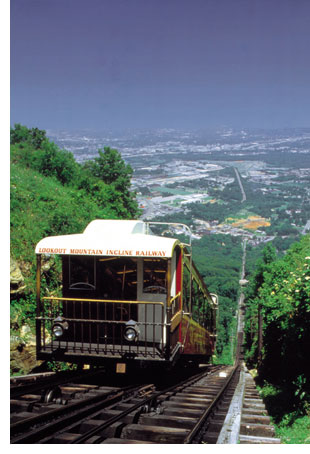 After being notably horrified as named one of America’s dirtiest cities, Chattanooga, Tenn. took a 180 degree turn and became one of the most pleasant little finds in the south. Indeed, Chattanooga has been a tourist destination for many years with the likes of Ruby Falls, Rock City and the Incline Railway. However, more recently Chattanooga has undergone a $120 million waterfront revitalization and with it visitors can now expect not only family fun, but also a romantic look at the past.
After being notably horrified as named one of America’s dirtiest cities, Chattanooga, Tenn. took a 180 degree turn and became one of the most pleasant little finds in the south. Indeed, Chattanooga has been a tourist destination for many years with the likes of Ruby Falls, Rock City and the Incline Railway. However, more recently Chattanooga has undergone a $120 million waterfront revitalization and with it visitors can now expect not only family fun, but also a romantic look at the past.
The name Chattanooga comes from the Creek Indian word for “Rock coming to a point.” Of course this refers to the main attraction in the city known as Lookout Mountain. However, nowadays Chattanooga is so much more.
In fact, to get a good first impression of Chattanooga’s revamp stop in first for a visit to the Bluff View Art District and stay right in the heart of it all at the Bluff View Inn (800-725-8338).
A tour of the art district will take you from towering Magnolia trees overlooking the Tennessee River to mansions built in the 1800s to pastry kitchens, coffee houses and even sculpture gardens with permanent and changing exhibits.
It wouldn’t be Chattanooga without stopping early on for some spelunking fun. In fact, a trip is not a trip to Chattanooga without a Ruby Falls visit.
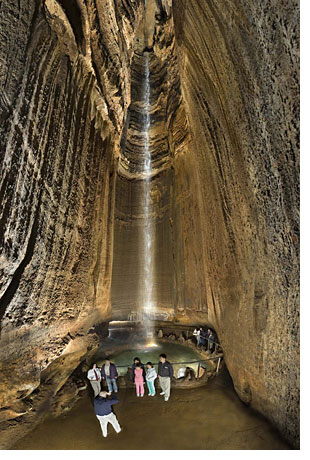 Since 1929 this place has been attracting tourists deep within the underground caverns of Lookout Mountain. The final result is a magnificent 145-foot thundering waterfall that is worth the walk among the various types of formations and rimstone pools.
Since 1929 this place has been attracting tourists deep within the underground caverns of Lookout Mountain. The final result is a magnificent 145-foot thundering waterfall that is worth the walk among the various types of formations and rimstone pools.
The waterfall is quite romantic too and yes, you can exchange your vows there. As for the name, “Ruby,” it was the name of the founder’s wife – Ruby Lambert.
Following a trip underground opt for the world’s steepest passenger railway and “America’s Most Amazing Mile.” The Incline Railway is over 2000 feet above sea level and offers spectacular panoramic views of the valley below.
The grade of the track is 72.7% near the top and is not for the faint of heart. On a clear day you can see the Great Smoky Mountains 100 miles away and you can also come away with the knowledge that the Incline Railway is a national historic site.
My favorite spot in Chattanooga is Rock City Gardens on top of Lookout Mountain. Opened in 1932 the place was originally advertised on barns and birdhouses throughout the south and became quite the popular drive destination.
Featuring pathways through rock formations and gardens the final and most exciting experience however is the little gnome world called Fairyland Caverns and Mother Goose Village. As you walk inside Fairyland Caverns it is lit with ultraviolet black lights showcasing Mother Goose displays that delight children and adults alike.
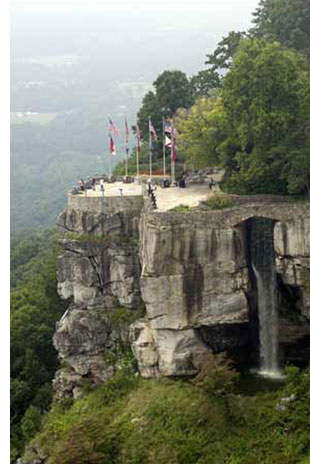 There is a panoramic view of seven states (Alabama, Georgia, Kentucky, North Carolina, South Carolina, Virginia and, of course, Tennessee) and as they say “on a clear day you can see forever” while standing atop this historic mountain.
There is a panoramic view of seven states (Alabama, Georgia, Kentucky, North Carolina, South Carolina, Virginia and, of course, Tennessee) and as they say “on a clear day you can see forever” while standing atop this historic mountain.
Of course, if you aren’t afraid of heights cross the swinging bridge as well and get a look at Lover’s Leap where, according to folklore a young Indian brave fell in love with a Cherokee maiden, but their tribes were engaged in a battle. The two lovers ran off together, were caught and instead of being apart jumped from the tip of what is now called Lover’s Leap.
With Chattanooga’s revitalization many new and exciting attractions have been added. One of the most exciting and well visited is the Tennessee Aquarium. It is the world’s largest freshwater aquarium with saltwater adventures to be found as well.
See the coral reef’s 10-feet long sharks, barracudas and stingrays as they move gracefully through the water. And don’t miss the IMAX 3D theater housed at the aquarium as well.
Another exciting addition to the waterfront is the $19.5 million expansion of the Hunter Museum of American Art where you can stay all day enjoying the permanent and temporary exhibits, the outdoor sculpture garden and the café and gift shop.
No river experience would be complete without a little adventure on the actual river so don’t forget to try out the Southern Belle Riverboat for lunch, dinner or a sightseeing cruise. It’s also another chance to get a glimpse of Lookout Mountain and the city skyline from a different angle.
Chattanooga’s Waterfront also offers a wonderful public art display showcased along First Street between Market and Walnut Streets.
The Chickamauga-Chattanooga Military Park was the nation’s first military park named as such in 1890 and it is still one of the largest of its kind today.
Finally, no trip would be complete to such a naturally beautiful city without the chance to take part in renewing nature. The Chattanooga Nature Center offers a “Adopt a Red Wolf” program with an emphasis on survival planning for this and other endangered species in the area.
Since there are only 100 Red Wolves in the wild and a mere 200 in captivity the Red Wolf exhibit is a crucial step in survival for this majestic animal (for more information call 423-821-1160 ext. 103) and meet the wolves on your next trip to Chattanooga.
Aristotle said “In all things of nature there is something of the marvelous.”
Whether he was talking about animals or plants, it is sure to see that Chattanooga has indeed made the land they call home marvelous and vital and ready for adventure.
About the author:
This week Traveling Tales welcomes freelance travel writer Rita Cook who makes her home in North Hollywood, California.
Photos courtesy of Chattanooga Area CVB
1: The Incline Railways nears the summit.
2: Ruby Falls deep in the caverns under Lookout Mountain
3: On a clear day you can see seven States from the lookout point.
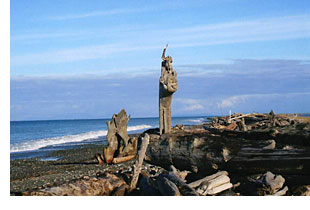
 Originally named in 1792 by Capt. George Vancouver for the Marquis de Townsend it did not officially become a community until 1851. It never reached its expected glory when the railroad terminal landed elsewhere but the legacy of its leavings are there for the viewing with a self guided walking/driving tour of its Victorian charm
Originally named in 1792 by Capt. George Vancouver for the Marquis de Townsend it did not officially become a community until 1851. It never reached its expected glory when the railroad terminal landed elsewhere but the legacy of its leavings are there for the viewing with a self guided walking/driving tour of its Victorian charm Port Townsend is also the terminal for the 30 minute Whidbey Island ferry run. The Island stretches long and thin through Puget Sound and is linked by bridge to the Mainland in the north. No less than five state parks, all set upon the coasts compliment its community parks and add to the rural laid back atmosphere. Two, Fort Casey and Fort Ebey State Parks house remnants of the forts which formed part of the ring of fire threatening anyone who dared consider an attack through the sound.
Port Townsend is also the terminal for the 30 minute Whidbey Island ferry run. The Island stretches long and thin through Puget Sound and is linked by bridge to the Mainland in the north. No less than five state parks, all set upon the coasts compliment its community parks and add to the rural laid back atmosphere. Two, Fort Casey and Fort Ebey State Parks house remnants of the forts which formed part of the ring of fire threatening anyone who dared consider an attack through the sound.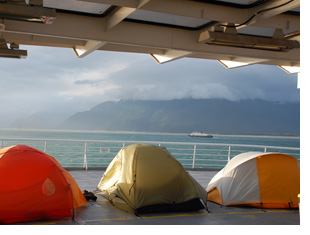
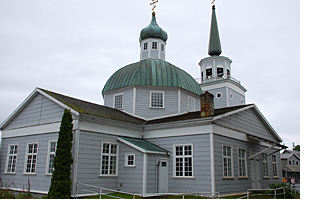 One of them is Sitka, on day 2, where a domed church, artifacts of Russian settlers, and hand-carved totem poles are reminders of the town’s unique heritages.
One of them is Sitka, on day 2, where a domed church, artifacts of Russian settlers, and hand-carved totem poles are reminders of the town’s unique heritages.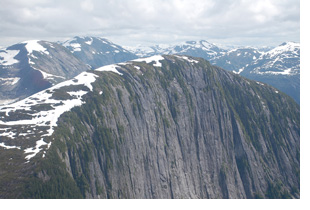 And what confirmed adventure traveller could really resist the opportunity of flying high above those stunning, remote, nearly vertical cliffs that separate the glacial valleys below, filled with mountain lakes, dense forests, and little islands, under a completely clear sky?
And what confirmed adventure traveller could really resist the opportunity of flying high above those stunning, remote, nearly vertical cliffs that separate the glacial valleys below, filled with mountain lakes, dense forests, and little islands, under a completely clear sky? This massive Frank O. Gehry architectural wonder, vaguely shaped in the form of a monumental guitar, is jammed packed with opportunities to get both of your hearts thumping. You’ll be mesmerized by the psychedelic-like acoustics of Sky Church, where musical greats become giant size on the monster video screen, take a step back in time with Jimi Hendrix and his ‘Evolution of Sound,’ and unleash innate musical talents when performing that special song for the one you love. Plunk away on the keyboard, strum on a guitar or serenade each other with a golden oldie.
This massive Frank O. Gehry architectural wonder, vaguely shaped in the form of a monumental guitar, is jammed packed with opportunities to get both of your hearts thumping. You’ll be mesmerized by the psychedelic-like acoustics of Sky Church, where musical greats become giant size on the monster video screen, take a step back in time with Jimi Hendrix and his ‘Evolution of Sound,’ and unleash innate musical talents when performing that special song for the one you love. Plunk away on the keyboard, strum on a guitar or serenade each other with a golden oldie. 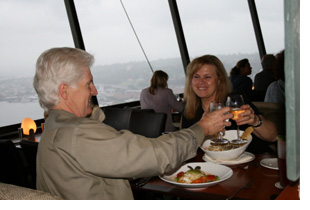 This futuristic-looking Space Needle has been Seattle’s well known icon since the World’s Fair in 1962. From its lofty six hundred foot (204 meters) high observatory your hearts will palpitate when checking out the stunning panorama that includes everything from the city’s bustling downtown hub to the pinnacle of Mt Rainer. Even when the clouds roll in, the ethereal effect will initiate some loving Valentine vibes. You can also share the vista while wining and dining by candlelight. This landmark’s SkyCity rotating restaurant dishes up culinary classics that match the 360 degree rotating view.
This futuristic-looking Space Needle has been Seattle’s well known icon since the World’s Fair in 1962. From its lofty six hundred foot (204 meters) high observatory your hearts will palpitate when checking out the stunning panorama that includes everything from the city’s bustling downtown hub to the pinnacle of Mt Rainer. Even when the clouds roll in, the ethereal effect will initiate some loving Valentine vibes. You can also share the vista while wining and dining by candlelight. This landmark’s SkyCity rotating restaurant dishes up culinary classics that match the 360 degree rotating view. 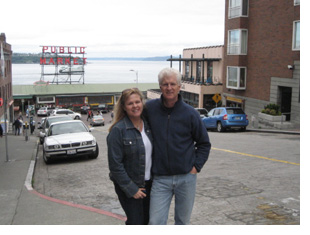 Chocolates, flowers, jewelry, oh my! You’ll find every valentine favorite at this queen bee of farmer’s markets. But watch out for those flying fish! This venue has been a Seattle institution since 1907 and beneath open air tents, merchants, craftsman and farmers line up year round. Aside from the original Starbucks, you won’t find any chain stores here –and all is sold on a first come basis, so for the freshest and finest, get their early. You won’t be disappointed!
Chocolates, flowers, jewelry, oh my! You’ll find every valentine favorite at this queen bee of farmer’s markets. But watch out for those flying fish! This venue has been a Seattle institution since 1907 and beneath open air tents, merchants, craftsman and farmers line up year round. Aside from the original Starbucks, you won’t find any chain stores here –and all is sold on a first come basis, so for the freshest and finest, get their early. You won’t be disappointed! 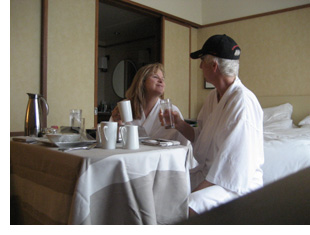 This elite award winner occupies a prime location near the city’s core. Instead of being squeezed next to downtown high rises that brim from Seattle’s bustling vortex, you’ll be idyllically distanced from the percolating crowds. It’s just four blocks from the Pike and Pine Street shopping, six blocks from the Convention Center and the Space Needle, and minutes via streetcar from Lake Union’s enticing restaurants.
This elite award winner occupies a prime location near the city’s core. Instead of being squeezed next to downtown high rises that brim from Seattle’s bustling vortex, you’ll be idyllically distanced from the percolating crowds. It’s just four blocks from the Pike and Pine Street shopping, six blocks from the Convention Center and the Space Needle, and minutes via streetcar from Lake Union’s enticing restaurants.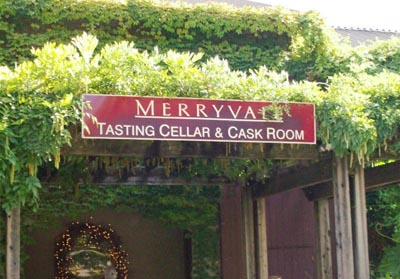
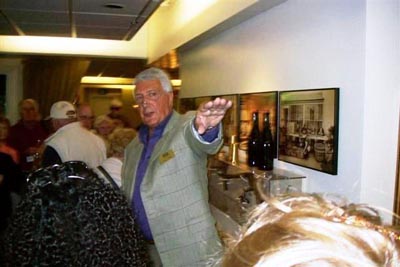
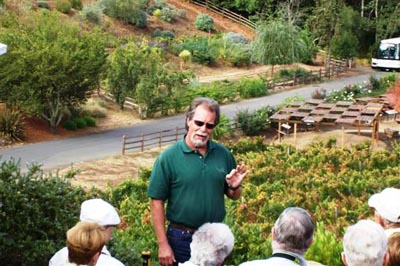
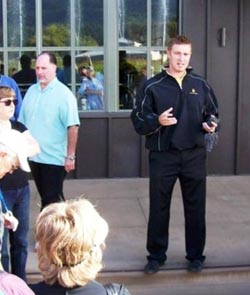
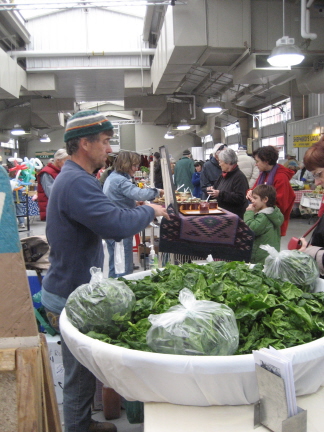
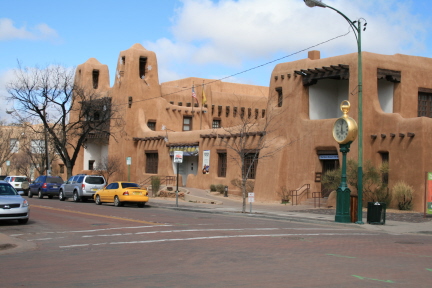
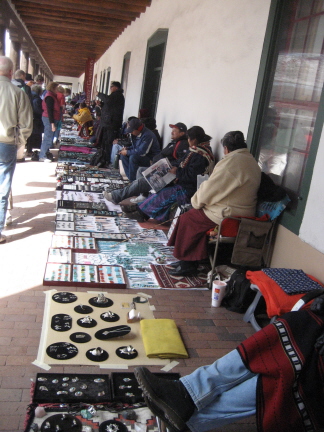
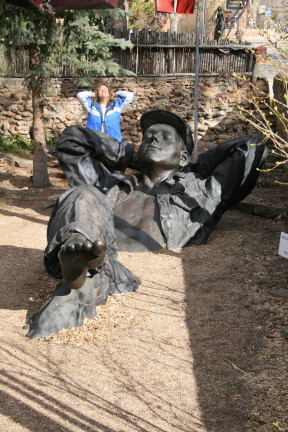
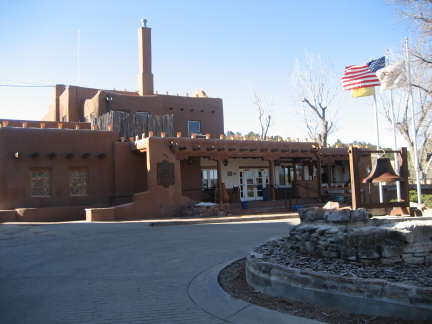
 In 2004, some 3.2 million visitors made the pilgrimage to the 1,200 square miles of stunning, protected wilderness that is Yosemite National Park, high in California’s central Sierra Nevada range.
In 2004, some 3.2 million visitors made the pilgrimage to the 1,200 square miles of stunning, protected wilderness that is Yosemite National Park, high in California’s central Sierra Nevada range. 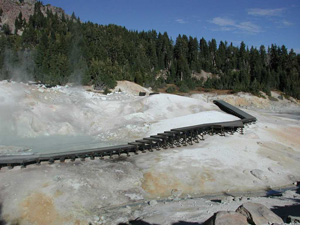 We arrived to the rotten-eggs smell of hydrogen sulfide. Walking across catwalks designed to protect us from the heat of this natural cauldron, we gazed down at boiling mud pots and superheated steam vents. Their colors astounded us—ochre, aqua and every shade of gray.
We arrived to the rotten-eggs smell of hydrogen sulfide. Walking across catwalks designed to protect us from the heat of this natural cauldron, we gazed down at boiling mud pots and superheated steam vents. Their colors astounded us—ochre, aqua and every shade of gray.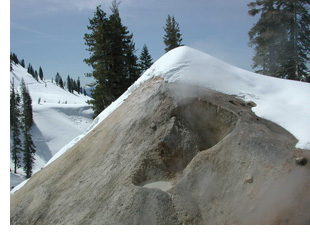 Both of the park’s pasts—the ancient one and the more modern one—tell a gripping story. Picture-perfect lakes and the seemingly serene mountain from which the park takes its name belie fiery beginnings 600,000 years ago.
Both of the park’s pasts—the ancient one and the more modern one—tell a gripping story. Picture-perfect lakes and the seemingly serene mountain from which the park takes its name belie fiery beginnings 600,000 years ago. 
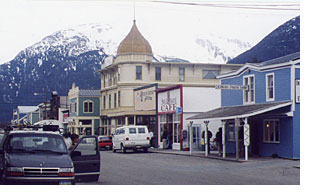 Most are desperados: stubble-chinned, brawling toughs who would give Skagway, with its bars, flop-houses and con-artists, the reputation of being the most lawless town in Alaska.
Most are desperados: stubble-chinned, brawling toughs who would give Skagway, with its bars, flop-houses and con-artists, the reputation of being the most lawless town in Alaska. 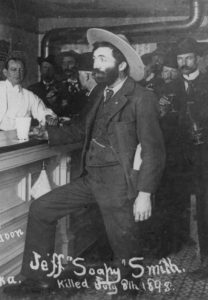
 I also pan for gold, and go “aaaah!” as I find a teensy speck in my pan. Real gold, but, shhh…planted to ensure that all tourists leave with a fleck or two in their pockets!
I also pan for gold, and go “aaaah!” as I find a teensy speck in my pan. Real gold, but, shhh…planted to ensure that all tourists leave with a fleck or two in their pockets!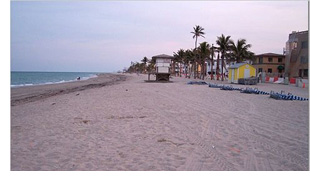 The famous “Hollywood Broadwalk,” a boardwalk that runs along Hollywood’s beach, is undergoing a major overhaul. Hotels such as the Hollywood Beach Marriott are getting a facelift, too. What was once a typical South Florida Howard Johnson’s property has now become a thriving oceanfront getaway, complete with a spa and exquisite restaurant.
The famous “Hollywood Broadwalk,” a boardwalk that runs along Hollywood’s beach, is undergoing a major overhaul. Hotels such as the Hollywood Beach Marriott are getting a facelift, too. What was once a typical South Florida Howard Johnson’s property has now become a thriving oceanfront getaway, complete with a spa and exquisite restaurant. 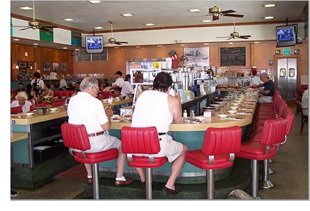 There were times I was a bit sad for the older dining establishments in the area. I visited the Rascal House delicatessen on A1A, a classic haunt that was frequented by the likes of Jackie Gleason.
There were times I was a bit sad for the older dining establishments in the area. I visited the Rascal House delicatessen on A1A, a classic haunt that was frequented by the likes of Jackie Gleason. 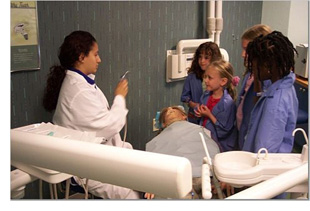 A children’s role-playing paradise in Sunrise
A children’s role-playing paradise in Sunrise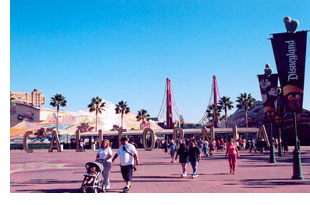 Who could guess that a quiet agricultural community would change so radically?
Who could guess that a quiet agricultural community would change so radically? 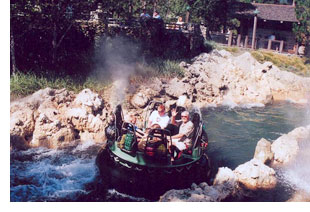 Falling back to earth, we trek into the Sierras and ride the raging Grizzly Bear Rapids. Ratcheting upward to Wolf Rock, the exhilarating descent begins. Our raft twists and turns under icy waterfalls, through howling caverns and over boiling white rapids.
Falling back to earth, we trek into the Sierras and ride the raging Grizzly Bear Rapids. Ratcheting upward to Wolf Rock, the exhilarating descent begins. Our raft twists and turns under icy waterfalls, through howling caverns and over boiling white rapids.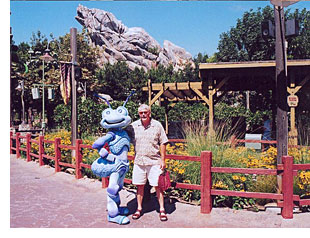 In nearby Bug’s Land, we literally feel the light-hearted earthy revenge from misunderstood insects in Flik’s multi-sensory flick ‘It’s Tough to be a Bug’.
In nearby Bug’s Land, we literally feel the light-hearted earthy revenge from misunderstood insects in Flik’s multi-sensory flick ‘It’s Tough to be a Bug’.